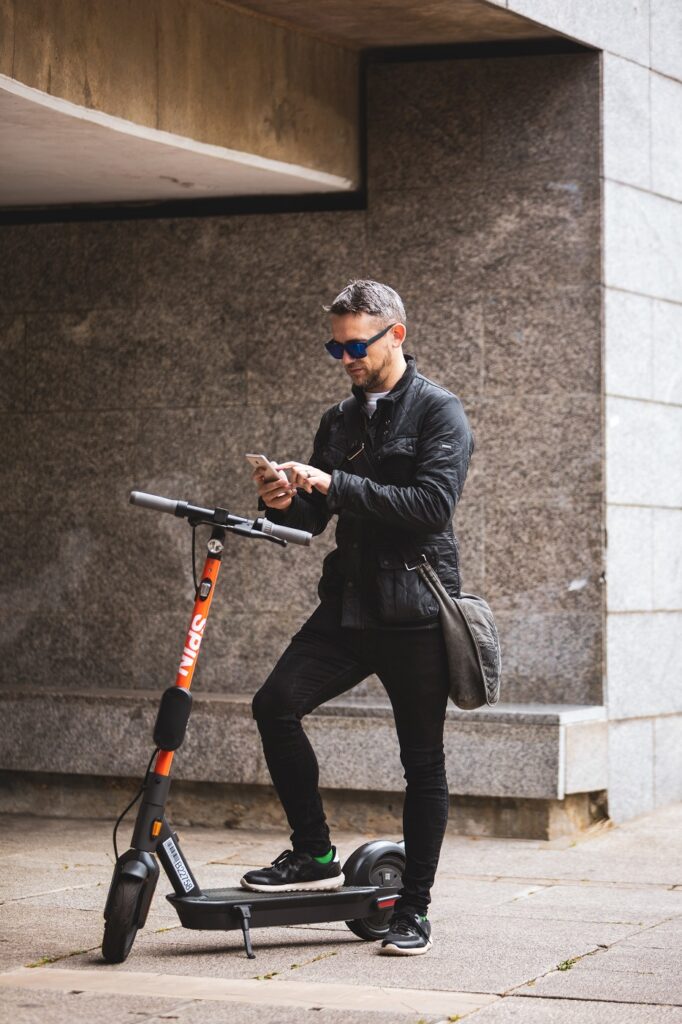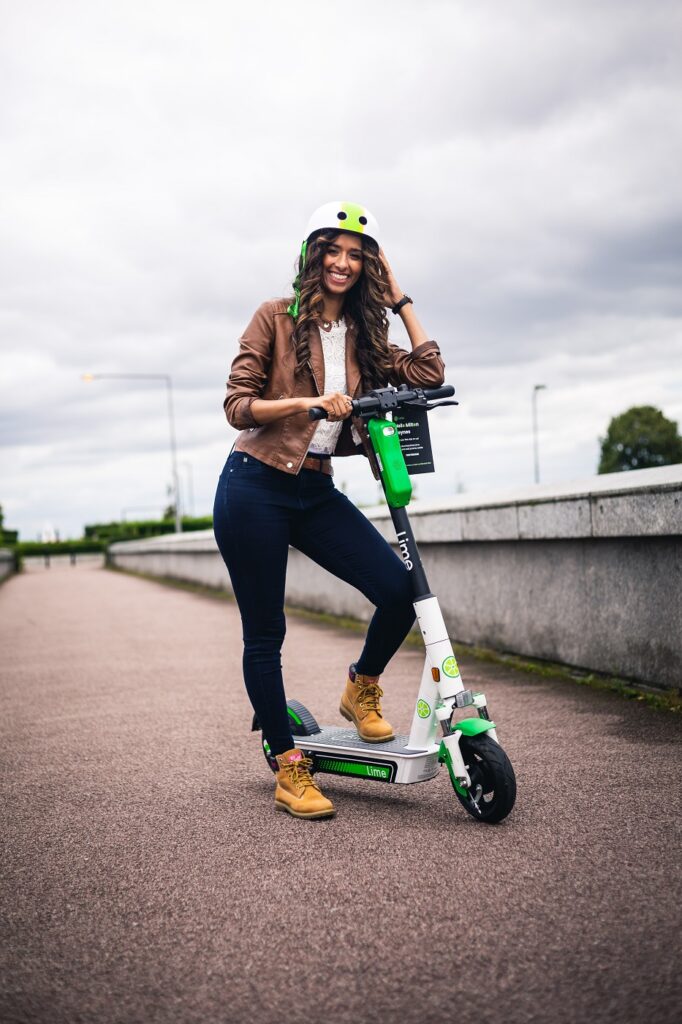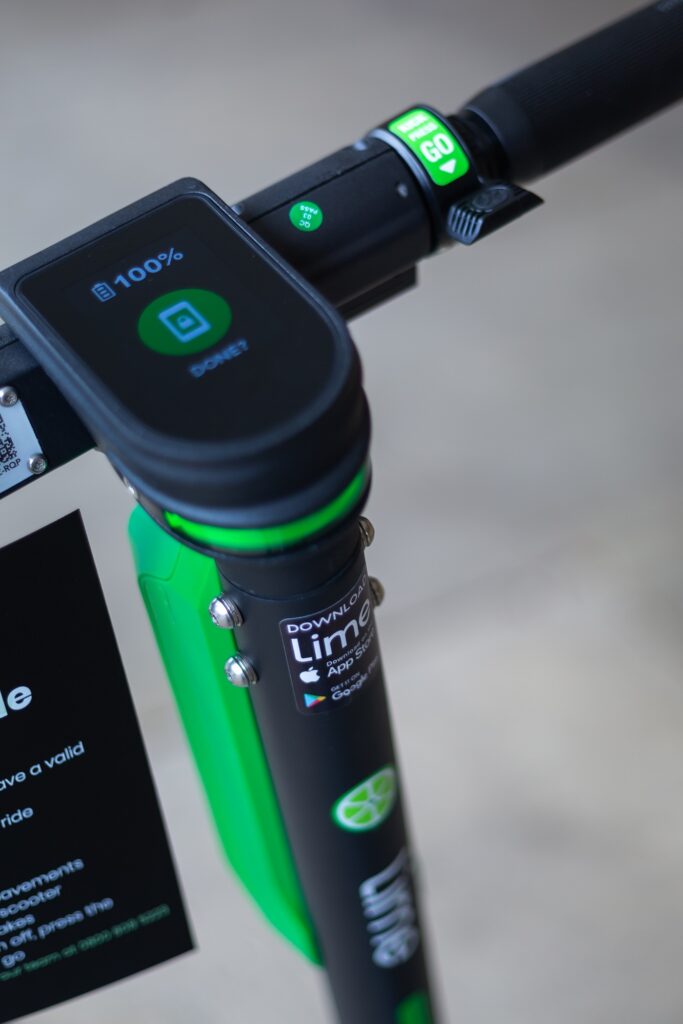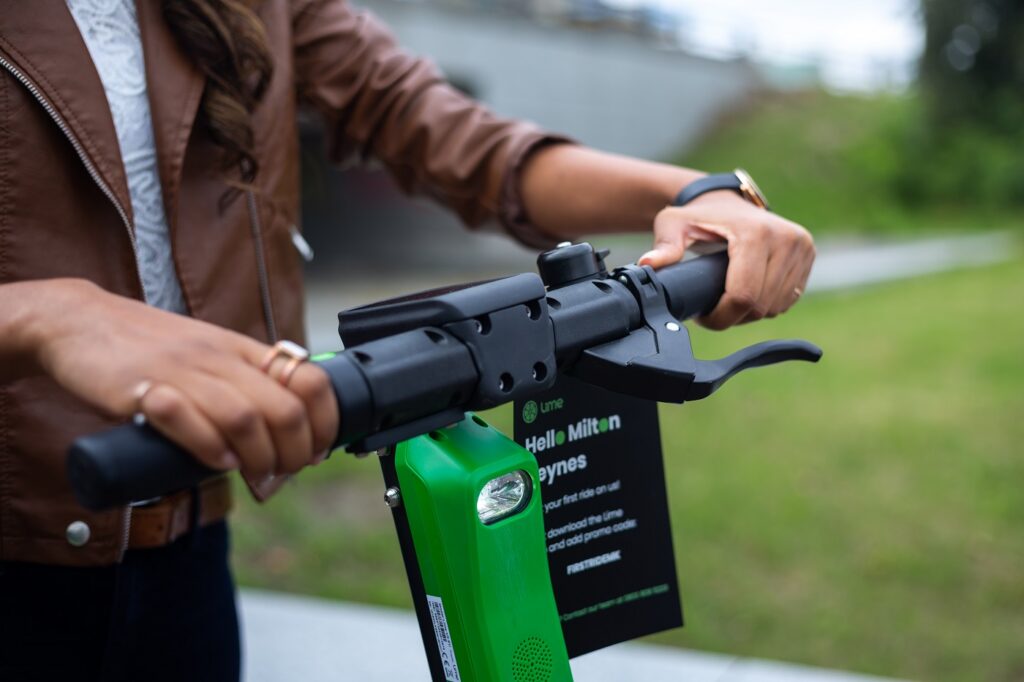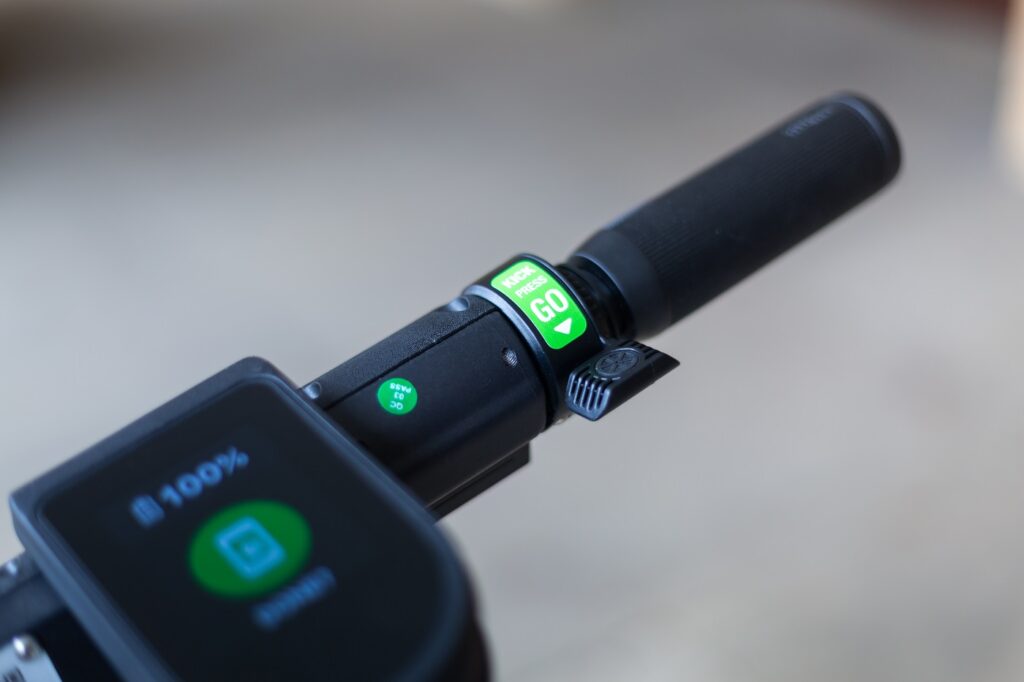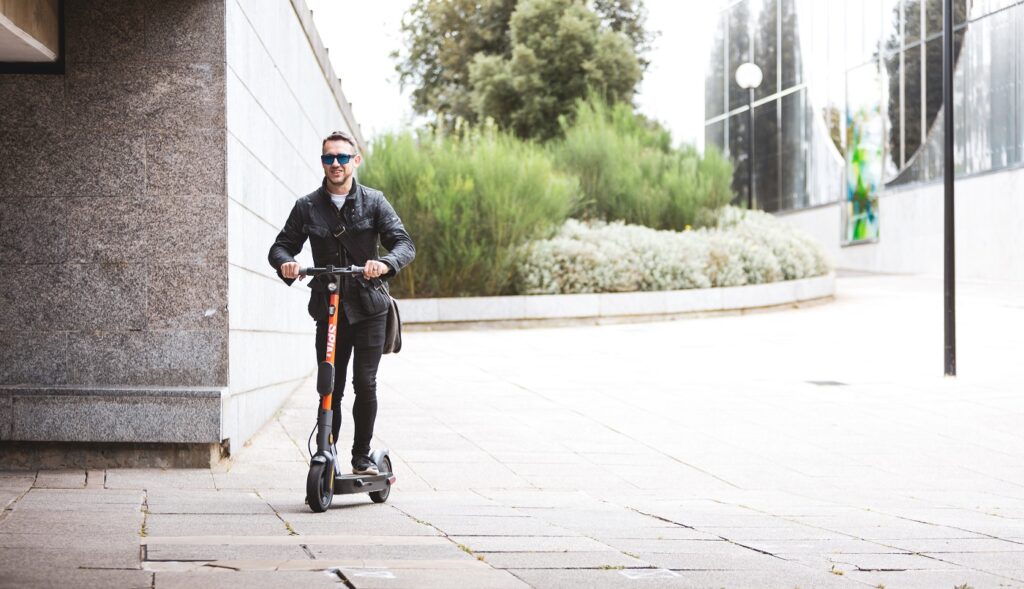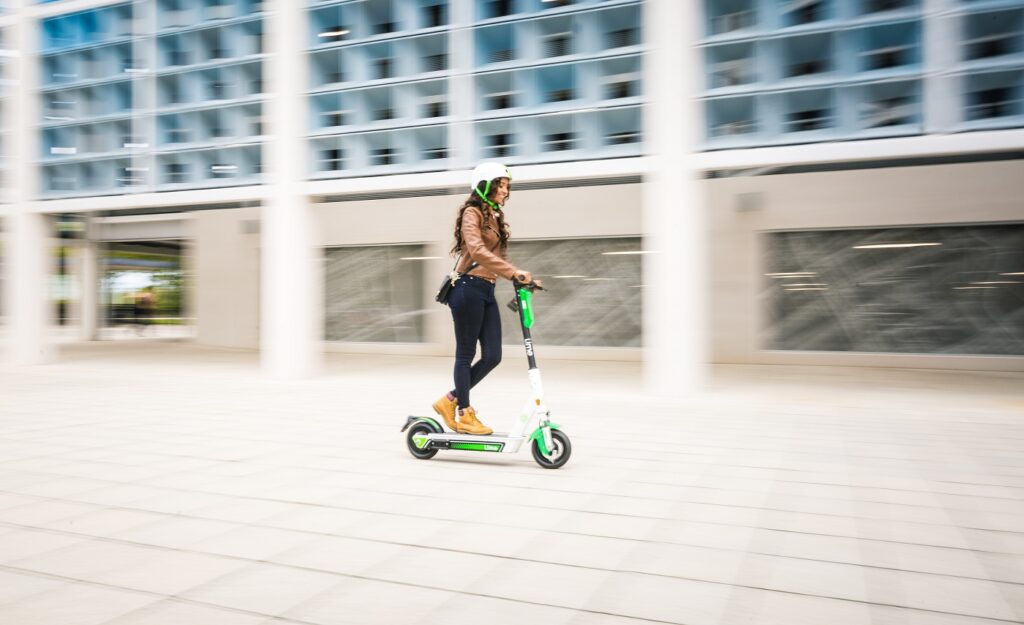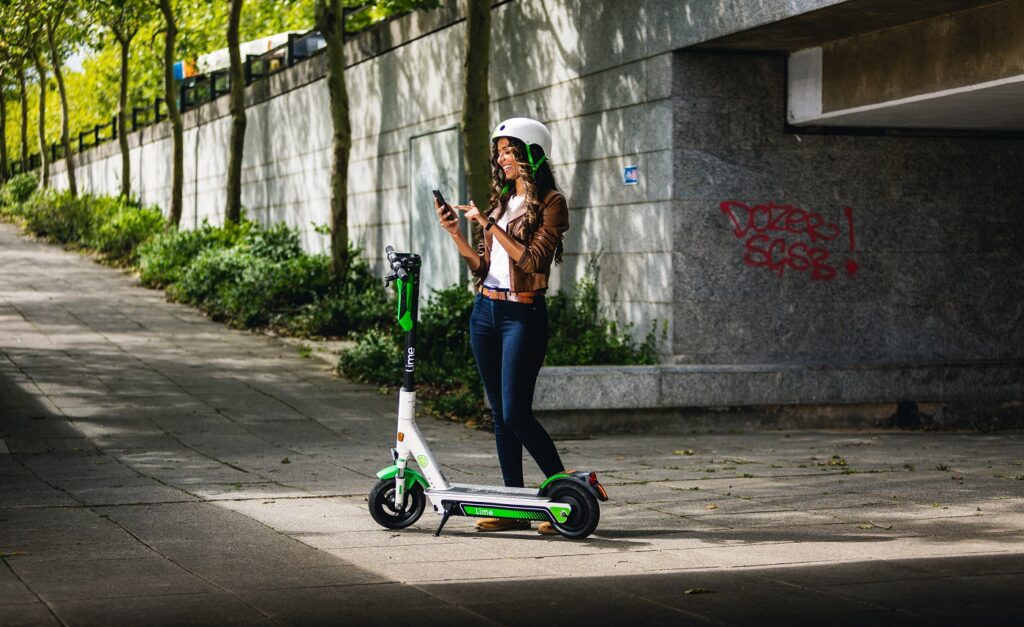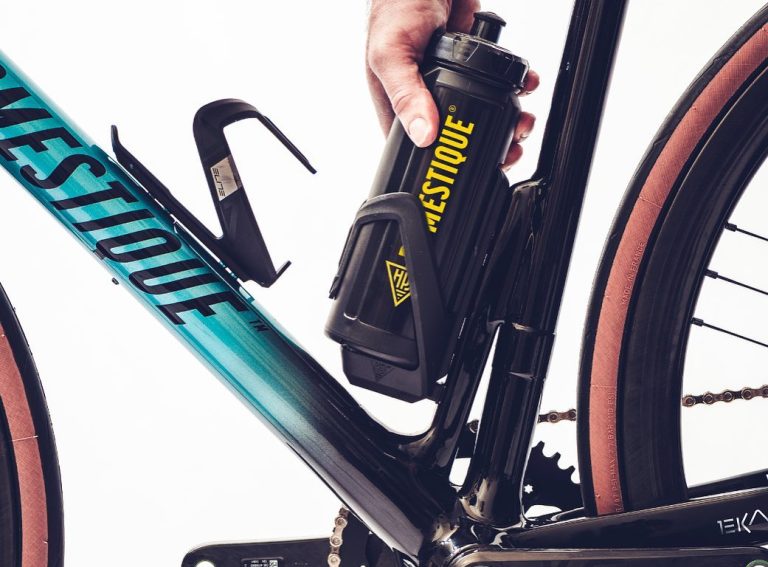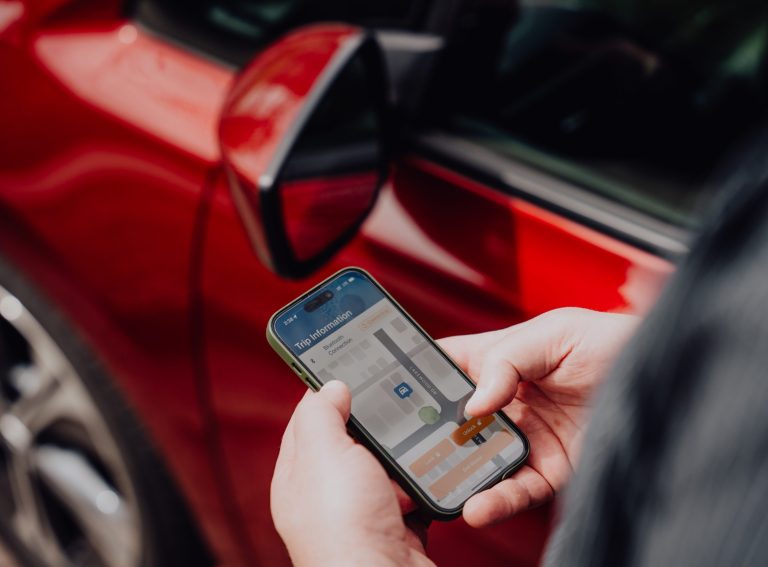It’s Milton Keynes. It’s two heavyweights going toe to toe. It’s – well, it’s not Anthony Joshua and Tyson Fury in a go-karting standoff. No, this is micromobility giants Spin and Lime claiming honours for the best service as they both go live in the same British town.
Ellie and I rolled up our sleeves and got stuck in for a side-by-side comparison (and definitely no drag races).
First impressions
Jeremy Clarkson once pointed out that the reason all fire engines look pretty much the same is that, after you’ve designed in the essentials, there’s not much more you can do to change that recognisable boxy shape.
It’s much the same with electric scooters. Two in-line wheels, one central handlebar stem, battery in the deck (usually, although Tier’s new model changes this up). There’s no soft-top option, no oversized blingy alloy wheels or, for you bicycle lovers, no clear lacquered carbon frame, to differentiate models.
Where micromobility operators are distinguished on grey city streets is with colour. Lime’s V3 EU scooter is mostly white with green highlights. Very modern, very fun, very Instagram generation. Spin has gone for grey and orange, which is bold without being garish. Actually, despite the bright orange stem, the Spin livery seems subdued in comparison with the funky fresh Lime colourway.
Controls
Riding the Lime scooter was simple. There’s a single button to accelerate, using the thumb on your right hand, and a choice of two braking inputs. The first is a lever on the left handlebar, which operates the front brake. This also illuminates the rear brake light. The second option is the rear wheel arch, which directly slows the rear wheel. A solid stamp and that wheel will lock.
Spin’s offering was even simpler to operate. There’s the usual right-hand-side accelerator button, but just one braking input, which is a brake lever on the left handlebar. This single input still operates two brakes, as mandated by the Department for Transport, one on each wheel – mechanical for the front, electronic for the rear. The bell seemed much better integrated into the handlebar than the Lime, where it looked more like an afterthought.
We found Lime’s large screen very helpful while riding and while parked, and it displays the state of charge. There’s a glitch, however. After around 15 minutes of hard riding on our scooters, after which they’d each dropped to around 80% charge, we stopped for a few photographs. When we returned to the scooters around twenty minutes later, one claimed to have 100% charge. Hmmm.
Still, even if you did manage to inadvertently run out of juice, it’s no massive disaster.
[It’s not, for instance, like running out of petrol on the motorway at midnight because you’re driving an old rust bucket with a temperamental petrol gauge that leaves you guessing how many miles you have in the tank…. RR]
Spin’s screen is smaller and was much harder to read than the Lime, especially when riding on brick weave roads – the lack of suspension exacerbated the issue.
Ride and handling
When up to speed, the Lime V3 is fairly twitchy but not off-putting. It was something we didn’t notice as much on the Spin – the Lime may be suffering from having slightly more gadgetry at the top of the stem – but there’s not a million miles between them. You’d be hard-pressed to try riding one-handed on either model, but that goes for e-scooters in general, meaning the lack of flashing indicators (as seen on Tier’s new model) was a shame. At no point during the rides did either Ellie or I feel we were about to fall off, even though most of our time was spent at the top speeds or traversing tricky potholes.
And that top speed of 15.5mph is more than enough. It is the maximum permitted by the UK regulations, and you can see why. Getting from A to B felt like a proper sprint.
The Lime model comes with front suspension, which was a welcome buffer between your palms on the handlebar and the brick weave below the wheels.
The Spin model we were riding wouldn’t go above an indicated 14mph, though it happily cruised along at that speed. It felt like it had the muscle to giddy-up a bit more so we’re not sure why it isn’t faster. This means it is currently around 10% slower than the Lime model at full speed. The Spin does not have suspension, so we’d be a bit more cautious when riding over rough surfaces.
Both the Spin and the Lime had very similar, and very ample, footplate widths. Both e-scooters let you get on with a pair of size 10s (mine, not Ellie’s), with room to shuffle about.
The size of your ’hood
Both Lime and Spin are restricted to central Milton Keynes. However, their interpretations of “central” are quite different. The Spin app showed the geofenced area at around 8.5 square miles, encompassing the city centre between the A5 and the M1, between Monks Way (H3 in Mk’s grid system) to Chaffron Way, excluding Linford Wood.
Lime covers pretty much the whole urban area, an area of 34 square miles – meaning scooters can reach out further, to suburbs like Westcroft, Wolverton and even Newport Pagnell. It also includes Ikea. This extra reach means Lime’s team has a larger area to service, including collecting e-scooters, but it might be a savvy move to encourage commuters. Arguably the pricing current structure means the Lime makes more sense for longer journeys (such as commuting from home), and the Spin is a frugal bet for shorter scoots.
An interesting footnote: Milton Keynes Council had said that the e-scooters should not go onto the grid roads – typically dual carriageways punctuated by the infamous Milton Keynes roundabouts – nor any roads with a speed limit above 30mph. However, neither operator appears to have geofenced those roads.
Value for money
We love a bit of delicious competition to get bargain basement deals.
Lime charges £1 to unlock and 20p/min to ride. Spin normally asks £1 to unlock but has waived this for the foreseeable future. Although Spin is more expensive per minute, at 25p, zero unlocking fee means that it’s cheaper to use Spin on journeys of up to 20 minutes. If bike share schemes are anything to go by, however, we would expect to see the operators adjusting their prices in line with demand or competition, so keep an eye on the apps for the latest information.

